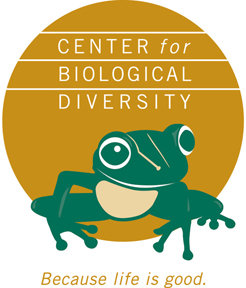Otay Village 13 Project in Fire-prone Area Would Threaten Endangered Species
December 18, 2020 - SAN DIEGO— Conservation organizations sued San Diego County on Thursday for approving Otay Ranch Resort Village 13, a massive sprawl development in the ecologically  rich Jamul mountain region. The project would locate thousands of new residents in a wildfire-prone area that is currently home to endangered and threatened wildlife species.
rich Jamul mountain region. The project would locate thousands of new residents in a wildfire-prone area that is currently home to endangered and threatened wildlife species.
The approval authorizes construction of more than 1,900 single-family homes and commercial buildings on an undeveloped 1,869-acre site near a nature preserve. The state has designated the site as a “very high fire hazard severity zone.”
“After the disastrous fires that burned millions of acres in California this year, it’s unconscionable that San Diego County’s outgoing supervisors approved this dangerous project,” said Peter Broderick, an attorney at the Center for Biological Diversity. “Sprawl development in highly wildfire-prone areas puts everyone at risk. This kind of project increases the chance of a human-ignited blaze that would endanger new residents, nearby communities, first-responders and wildlife.”
Three of the four supervisors who approved the project will be replaced in January.
The project’s location in a high-wildfire zone drew criticism from the state. In two separate letters to the county, California Attorney General Xavier Becerra said the project shouldn’t go forward, citing “critical flaws” in the county’s analysis of the project’s increased risk of wildfire and impacts to fire evacuation and safety in the region.
The development also threatens the critically endangered Quino checkerspot butterfly. The species was once abundant in Southern California but is now hanging on by a thread.
“The project will bulldoze some of the last high-quality habitat for this butterfly in San Diego County,” said Dr. Tara Cornelisse, a Center entomologist. “If this project goes forward, it could truly spell the end of the species.”
The project site provides habitat for other protected species like the Golden Eagle, California Coastal gnatcatcher, burrowing owl, western spadefoot toad and San Diego fairy shrimp. And its outdated, car-centric design would result in massive greenhouse gas emissions at a time when the state is striving to achieve significant pollution reductions.
“Sierra Club continues to fight sprawl developments, which increase wildfire risks and local air pollution,” said Dr. Peter Andersen, vice chair of Sierra Club's Conservation Committee. “Instead, the county should be focusing growth in areas where there is transit and jobs.”
Today’s lawsuit was filed in San Diego County Superior Court by the Center for Biological Diversity, Preserve Wild Santee, the California Chaparral Institute, Endangered Habitats League, California Native Plant Society and Sierra Club. The lawsuit asserts that the project’s environmental impact report violated the California Environmental Quality Act and that the project is inconsistent with the county’s general plan.
The Center for Biological Diversity, Preserve Wild Santee and the California Chaparral Institute are represented by the Center for Biological Diversity. The Endangered Habitats League and California Native Plant Society are represented by Shute, Mihaly & Weinberger, LLP. The Sierra Club is represented by Chatten-Brown, Carstens & Minteer.








